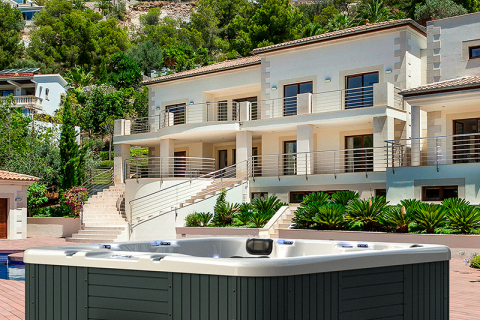
- Home
- >
News
The height of a hot tub also affects water consumption and energy consumption. Deeper bathtubs require more water and energy to heat, increasing the cost of use and the environmental burden.
In the cold winter, ensuring that the water in the hot tub does not freeze is key to keeping it running. The main purpose of draining the water is to prevent water from freezing in extremely cold weather and prevent financial losses from burst pipes.
Long-term hot tub soaking may cause blood pressure fluctuations, especially in winter when the temperature difference is large. The warm water temperature causes blood vessels to dilate, and long-term soaking may cause a slight drop in blood pressure.
Baking soda is not the only substance that can increase the alkalinity of hot tub water. There are other chemicals on the market that are specifically designed for water quality maintenance, such as alkalinity increasers. These products usually contain sodium carbonate (Na₂CO₃), also known as soda ash.
If the hot tub is not shut down, the pump is still running, and the filter is in a working state driven by water pressure, and removing the filter rashly may cause the following problems: 1. Water gushing 2. Equipment damage 3. Safety risks
Calculate the amount of antifreeze required based on the capacity of the hot tub and the use ratio of antifreeze. For example, if the capacity of the hot tub is 300 gallons, and one quart of antifreeze is required for every gallon of water (a 1:4 ratio), then the total amount of antifreeze required is 300 quarts, or about 75 gallons.
If multiple people use a hot tub every day, contaminants such as body oils, sweat, and cosmetics will increase significantly in the water, which will accelerate the consumption of bromine. Frequent use means that bromine needs to be added more frequently to maintain its disinfecting effect.
People who are not suitable for outdoor hot tubs: 1. People with cardiovascular diseases 2. People with respiratory diseases 3. People with diabetes 4. Pregnant women 5. People with sensitive skin or skin diseases 6. People with poor body temperature regulation 7. Alcoholics and drug users 8. People with weak immune systems 9. People who are overly tired or dehydrated
Large hot tubs usually refer to those hot tubs that can accommodate multiple people at the same time, such as 6-person and 7-person hot tubs. This type of tub not only provides more space for use, but also has more functions.
Common home hot tubs are usually equipped with 3kW to 5kW heaters. For example, a 3kW heater can heat about 2°C to 3°C per hour. If you want to heat from 15°C to 40°C, it theoretically takes about 8 hours. In contrast, if it is a 5kW heater, the time required may be shortened to about 5 hours.
The relatively low power of the plug-and-play hot tub's heater means that the water will heat up more slowly in cold environments. Especially when the outdoor temperature is near or below freezing, the tub will take more time to heat the water to the ideal temperature.
Diseases that can be spread in hot tubs: 1. Legionnaires' disease (causing severe pneumonia), 2. Pseudomonas infection (ear, urinary tract infection), 3. Skin fungal infection (skin itching, erythema), 4. Norovirus infection (diarrhea, vomiting, fever), 5. Mold infection (cough, nasal congestion).












